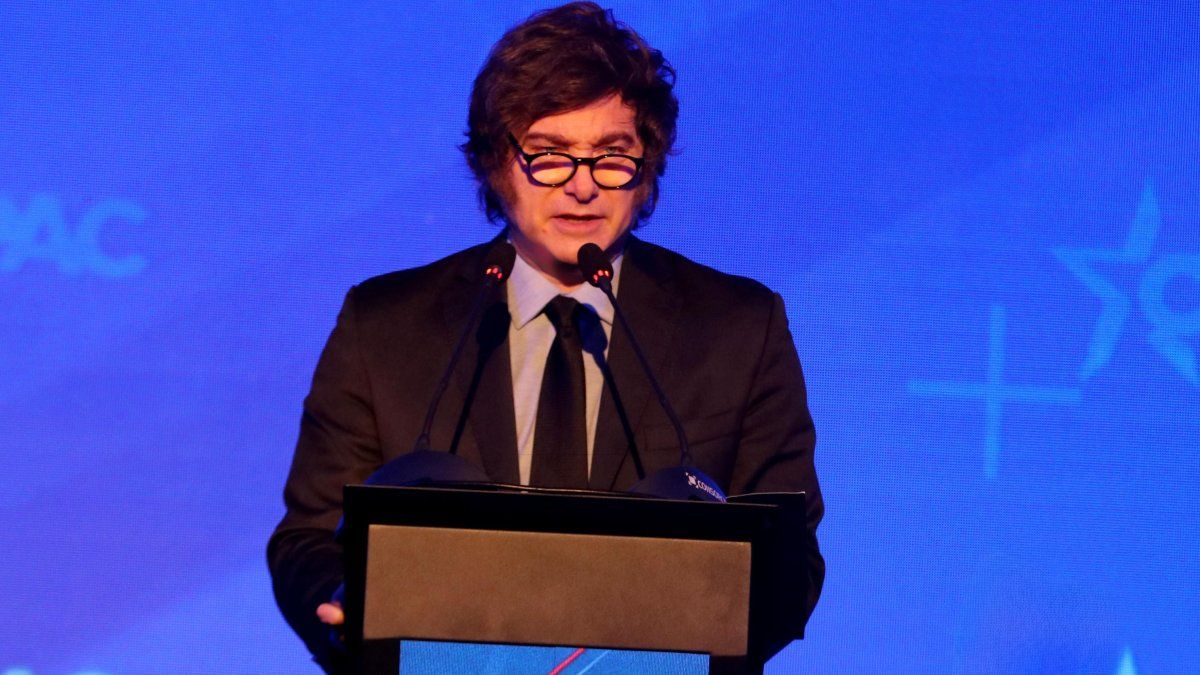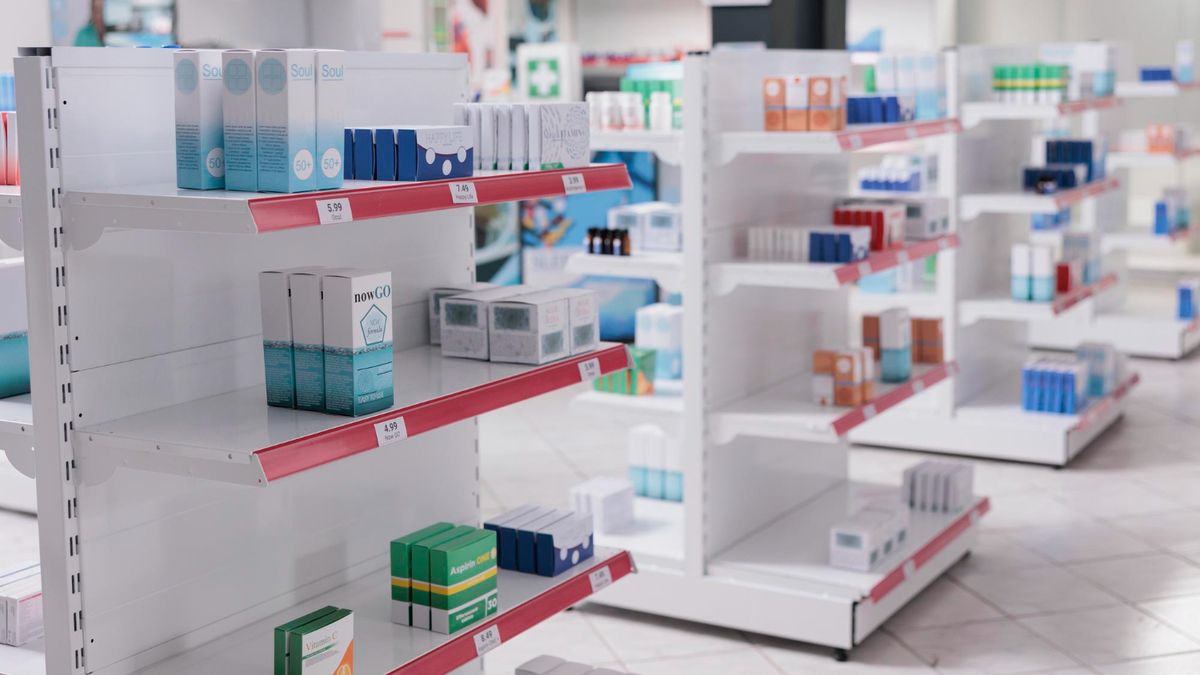HM: With YPF 4×4 we mean that the company It is a company that generates value for all shareholdersboth the National State, which has the majority and for the people who have shares. I don’t know if you have shares, if you don’t, you missed out, but you missed out on making a lot of money in the last year. It is due to several things, but I am going to tell you the four pillars. The first pillar, which we said, is to invest in Vaca Muerta, in oil. What happened? From around 95 thousand barrels, I’m talking about our own, according to yesterday’s daily report we went to more than 143 thousand. So, it is a very impressive increase, but the most important thing that I think we did this year was to get all of us together, the entire industry, to sign what is called “VEMOS”, which is the Vaca Muerta South Pipelinewhich removes the bottleneck in the production of Vaca Muerta in Neuquén. That for me was a very important milestone because we all managed to sit at the table and sign together the largest infrastructure investment in Oil and Gas in Argentina of US$3 billion. And we did it in record time, I believe that YPF’s technical work also involved advancing the 6 months of documentation and management, you do the math and you will see that the savings are more than the cost of an oil pipeline that we generated by having advanced it.
Interview Scope COURT 1.mp4
Journalist: I understand that there is a lot of work put into portfolio management due to technical issues…
H.M.: Exact. It seems very technical, but it is nothing more than seeing all the businesses we have and ordering them by profitability and focus. It is pillar two. There we can say that we sold YPF Brazil a week ago. We also have in the pipeline the sale of YPF Chile, which as of January 1 we are out, because they were two companies whose profitability amounted to less than one and a half million dollars and the truth is that we invoiced close to 20,000 million dollars. It’s a loss of focus. On the other hand, what we call “mature fields”, which is something that YPF does not have to have, no company of our size has, because it loses precisely due to focus and profitability, because the investor, if he has to invest, looks at the facelift. cost, the dollars needed to produce a barrel of oil, In Vaca Muerta we are in the order of 5 dollars, in those called marginal or mature, it can be from 25 to 50 dollars, whatever number you want, depending on the maturity of the field. That is the focus of profitability, if you are an investor you could tell me to invest elsewhere. On the other hand, the sale of mature fields is also good because we generate an ecosystem for SMEs, new companies appear that are going to grow.
Journalist: How do you think about productivity and efficiency based on these projects?
HM: The third pillar, we have several projects there, two that are already a reality. The first is the Real Time Intelligence Center, that is what we call it, the NASA of oil, which is knowing the operation is a real time of the drilling and completion operations, which is where we fracture, from the office, second by second, We measure 35 million data per well per day, we process all that with artificial intelligence plus physics. Every three of us manage four RIGS, we have high definition cameras. We want to reduce drilling times. Linked to this operations center, we are talking about generating a profit of at least US$200 million this year for YPF.
Journalist: I heard a few days ago that you mentioned that YPF plans to reduce the construction time of wells in Vaca Muerta, which is one of the objectives. How do you plan to do it?
HM: That’s right, we call it Toyota Welland it is something that I wanted to implement at Tecpetrol a few years ago, but we did not have scale and in the end we could not do it. Toyota Well is the idea of applying what the automotive industry does in the oil industry, applied to the construction of wells. And there is a reason. The conventional oil industry is extremely profitable, an Apple-type business, where you pay a thousand dollars for the cellular device, very happy, but the cost should be very little, and the rest is all marketing. But the unconventional oil business is like Walmart, little margin and a lot of scale, and for us, if we have 10,000 wells in our portfolio, you are talking about 200,000 million dollars, you have to be efficient. The Toyota Well is not for drilling well or fracturing well, because we at YPF do that very well. The Toyota Well does not get into drilling and completion, it gets into the well cycle. We found that we had 320 days from when we started drilling to when we started producing. And we have to shorten that. This year we set a time reduction goal of 25 or 30 percent, but I think we have to go much lower than 180 days, that will be our goal. Therefore, for investors, we are going to lower working capital by well over $1 billion. That’s why we do it, to complement what we know how to do and thus be extremely efficient, because in LNG (Liquefied Natural Gas) our competitor is the United States.
Interview Scope CUT 2.mp4
Journalist: How does YPF conceive the development of LNG for the coming years?
HM: We are leading what we could say are three phases. The first, YPF entered a few days ago as one of the partners (15%) in the LNG export project led by Pan American Energy (PAE), and which will be carried out through the “Hilli Episeyo” ship, owned by Golar. LNG, which has 10% of the project shares. Let us remember that it has already entered the RIGI, the English Harbor Energy (15%) and Pampa Energía (20%) joined Southern Energy – the joint venture to sell Vaca Muerta gas to the world. Now, the idle capacity of the summer is used to sell gas, but that has a very low profitability, because you do not sell every day and they charge you for the boat every day. So, We are looking at the possibility of negotiating with a European country with the same company.because each of the companies we are talking to seems that, together, they want to buy the entire boat.
Journalist: YPF signed an agreement with Shell to replace Petronas in the LNG project in Río Negro…
HM: It’s phase two. But let’s clarify something. YPF and Petronas were studying a project of 5 million tons of LNG, but that changed and we, now, take it to 30 million, that’s why we call it “Argentina LNG”because it is not only for YPF, it is for all of Argentina. What did that accomplish? Scale and efficiency in infrastructure. In addition, we take advantage of the “RIGI” Regime, which is very important, not only for the economic incentives it provides, but for the stability it offers investors. What do we achieve? For example, for Asia we are more competitive than the United States, and even Rystad says so. We have extended it to two ships, Shell itself is going to be one of the off-takers. And we are going to add a second off-taker, a supermajor, we are in talks. If we have the corresponding off-takers, that needs financing, and that is why we are going to build the ships, they would be the two largest LNG ships in the world, they will be more than 350 meters long, they are impressive.
Journalist: Now you’re going on a trip…
HM: For phase three I am going to travel to Asia starting January 1st. We are going to go to the countries that we need to visit, which are the largest buyers, Japan, Korea, China, and then I am going to sign a Memorandum of Understanding (MOU) with India of a volume very important because India is going to be the engine of the 2030s, they need about 80 million tons of LNG for their economic growth. So we want to position ourselves there, not only for YPF, but also for Argentina. I want Shell to be there too, because with Shell we can continue growingand other companies. I am going to stay working until 2031. The day I inaugurate the last LNG plant, I will never work again in my life. It’s the end of my cycle, end of cycle. And how does it come? Therefore, pillar one of YPF 4×4 is to invest in the most profitable thing, which is Vaca Muerta oil. And removing the bottleneck enables us to reach peak production in 2028, 2029, 2030. We, at Vaca Muerta, have to more than double the production we register today. We are going to have to increase investment to achieve the fastest increase in production. That will be when Vaca Muerta Oleoducto Sur, VMOS, comes into play. You have to do it quickly, because when you advance a profitable project by one year of exports, you are earning 5,000 or 10,000 million dollars.
Interview Scope CORTE3.mp4
Journalist: In the coming weeks, theoretically the RIGI approval for the Vaca Muerta Sur Oil Pipeline is expected…
HM: I’m waiting for it to be approved. The YPF Luz one recently came out. And this one is also coming out. There are six shareholders and we are waiting for approval, they are investments for US$3,000 million to export more than 550,000 barrels of oil per day starting in 2027. There is a very important understanding of investors. I was in New York recently and spoke with very important people and the truth is that they are very happy with the way we are managing YPF and really the only thing we can tell you is that we work hard for all investors to generate value and the north of YPF is the generation of value. Since they allowed me to buy YPF shares, I buy constantly. The stock is going to go up. You should do the same…
Source: Ambito




